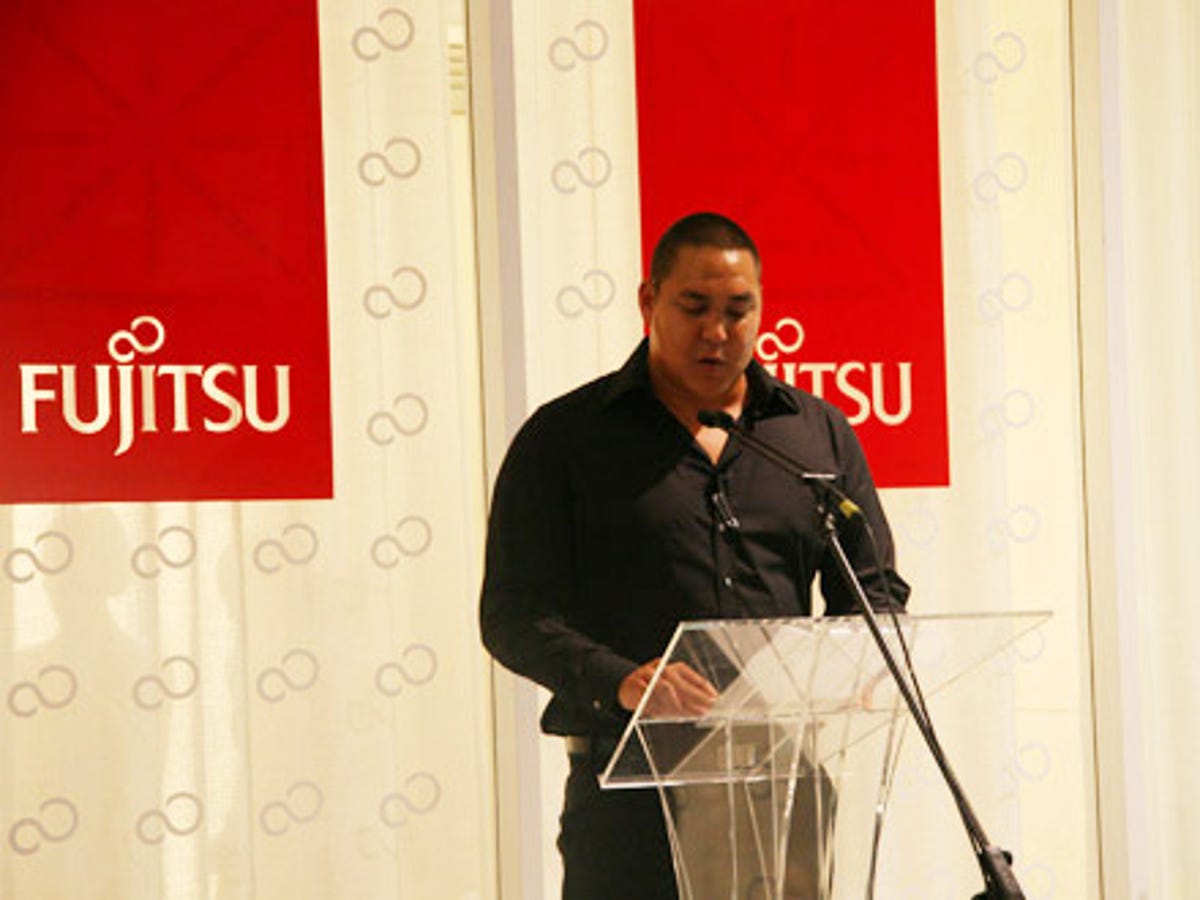
Fujitsu's intent to focus on the consumer market was made clear yesterday in the swish trappings of the de de ce showroom in Darlinghurst, Sydney.
Olympic swimmer Geoff Huegill opened the event, where Fujitsu focused on how its products would be used in every day living, moving model and laptops from the living room, to the lounge room, to the bedroom to emphasise that technology has become a part of every day life.
Kenichi Kimura, lead designer at Fujitsu then walked us through Fujitsu's design philosophy, the desire to innovate and showed us some fascinating concept PCs that never made it to market.
Fujitsu's use of celebrity Olympic swimmer Geoff Huegill (pictured here) under the roof of the stylish de de ce indicated a desire to move away from traditional business roots and into the more fashionable consumer market.
Kenichi Kimura, one of Fujitsu's chief designers for more than 10 years. Kimura described that when designing notebooks, he aimed to create unique design combined with ease of use. Kimura called this the "quest for usability".
When creating laptops, Fujitsu attempts to create realistic "usage scenarios".
Pictured here is one such scenario, in which a model in a red dress uses the U1010 in a living room decked out with expensive modern art furniture.
Another realistic usage scenario; this time featuring two models working hard on their PhD theses.
One of Fujitsu's latest LifeBooks get some intimate attention.
Seen here using the U1010, this model's likeness to CNET.com.au's Ella Morton was commented on.
On the floor, on the bed, on the lounge -- laptops are everywhere.
The first of the design concepts that never surfaced for public consumption. Fujitsu developed a CD case sized, touchscreen ultra-mobile PC, however they felt the software wasn't quite up to scratch. The base could be rotated at 45 degrees to the top to reveal navigation buttons.
The next concept laptop folded out in three parts -- first the screen, and then a full sized keyboard folded out to the side.
Kimura claims the foldout design was influenced by the ancient Japanese art of origami.
The fabric based laptop, which will utilise the still under-development "electronic paper": a foldable, bendable display technology. When closed it resembled a hard cover book.
The keyboard can be folded out further to reveal more display, in order to show others what you're viewing -- whether a map, presentation or otherwise.
The newest of the Fujitsu P Series, the "Bamboo", has a single black line horizontally across the back of the screen.
We're having a tough time deciding which is the model -- the U1010, the girls, or the oh-so-buff security guard.
Rocking with Fujitsu.
From the presentation, as there wasn't an actual product: an old phone-like concept design which involved multiple slide directions to reveal more functions.
A more detailed view of Kimura's origami inspired design.
Another concept design, this time combining a laptop with furniture for a modern, integrated living approach.
More detail on the earlier touchscreen ultra-mobile PC. While it used a touchscreen, Fujitsu was inspired by the Nintendo DS and included a pen.
Inspired by DJs, this concept laptop has a top panel that acts as a turntable.
A closer looks at Kimura's concept fabric laptop.
Detachable electronic "card" displays. These could be used in museums, zoos, restaurants, or other situations where patrons need to access information. Fujitsu has also been exploring store based information displays and handheld units that interact with these.

